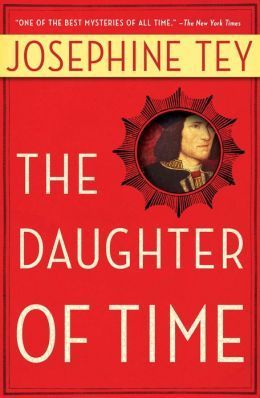
The Daughter of Time Summary of Josephine Tey's Book

The Daughter of Time by Josephine Tey: Unraveling Historical Mysteries
An Introduction to The Daughter of Time
Josephine Tey's novel, The Daughter of Time, published in 1951, weaves a compelling tale of historical intrigue and mystery. Set in the world of Scotland Yard inspector Alan Grant, the book delves into the centuries-old enigma of Richard III, the King of England. Through Grant's eyes, readers are guided on a quest to uncover the truth behind a controversial historical figure. The Daughter of Time is a novel that challenges perceptions, questions history, and ultimately entertains and educates its readers.
The Characters of The Daughter of Time
- Elizabeth of York: The daughter of Edward IV and Elizabeth Woodville, she plays a crucial role in the power struggles of the time.
- Henry VII of England: The first monarch of the Tudor dynasty, he rose to power after defeating Richard III at the Battle of Bosworth.
- Richard III of England: A controversial figure, Richard III is often portrayed as a villain due to the mysterious disappearance of his nephews, the Princes in the Tower.
- Edward V of England: The older of the Princes in the Tower, he was declared illegitimate by Richard III.
- Inspector Alan Grant: The protagonist of the novel, Grant is a Scotland Yard inspector with a keen investigative mind.
- Cecily Neville: The mother of Richard III and Edward IV, she plays a pivotal role in the political landscape of the time.
- Marta Hallard: A friend of Grant's, she assists him in his quest for the truth about Richard III.
- Sergeant Williams: A colleague of Grant's at Scotland Yard, he provides support in Grant's investigations.
- Brent Carradine: A historian who helps Grant navigate the complexities of medieval history.
- Atlanta Shergold: A researcher who aids Grant in unraveling the mysteries surrounding Richard III.
- Sir William Harrington: A historical figure who becomes a key piece in Grant's investigation.
A Detailed Summary of The Daughter of Time
In The Daughter of Time, Scotland Yard Inspector Alan Grant finds himself confined to a hospital bed due to a leg injury. With ample time on his hands, Grant becomes captivated by a portrait of Richard III, a king notorious for his alleged crimes, including the murder of his nephews, the Princes in the Tower. Intrigued by the discrepancy between Richard's appearance and his reputation, Grant embarks on a journey to uncover the truth behind the historical figure.
Grant enlists the help of his friends, including historian Brent Carradine, to research the events surrounding Richard III's reign. As Grant delves deeper into the historical records and primary sources, he begins to question the validity of the accusations against Richard III. With the assistance of Atlanta Shergold, a researcher, and Marta Hallard, a friend, Grant pieces together the puzzle of Richard's life, seeking to understand the man behind the myths.
Through their investigations, Grant and his companions uncover inconsistencies in the accounts of Richard III's reign and the fate of the Princes in the Tower. They challenge established narratives and question the motivations of those who painted Richard as a villain. As Grant unravels the layers of deception and propaganda surrounding Richard III, he discovers a complex and misunderstood figure, whose true character may have been distorted by political agendas and personal biases.
An Extensive Analysis of The Daughter of Time
The Daughter of Time is a unique blend of mystery, historical fiction, and character study. Josephine Tey masterfully combines elements of detective fiction with a deep dive into the complexities of medieval history. Through the eyes of Inspector Alan Grant, readers are invited to reevaluate their perceptions of historical figures and events, challenging preconceived notions and exploring the nuances of human nature.
The novel's exploration of Richard III serves as a compelling case study in the power of narrative and the influence of historical storytelling. By questioning the authenticity of historical accounts and examining the biases that shape our understanding of the past, The Daughter of Time prompts readers to reconsider the lens through which history is viewed. Tey's meticulous research and attention to detail bring the world of medieval England to life, immersing readers in a rich tapestry of political intrigue and personal drama.
At its core, The Daughter of Time is a story about the pursuit of truth and the importance of critical thinking. Through Grant's relentless search for answers, readers are encouraged to question the narratives presented to them, to seek out the facts behind the stories, and to uncover the hidden truths that may lie beneath the surface. In a world rife with misinformation and manipulation, The Daughter of Time serves as a reminder of the power of knowledge and the significance of uncovering the past to illuminate the present.
To conclude, The Daughter of Time is a thought-provoking and engaging novel that challenges readers to think critically, to question authority, and to seek out the truth in a world of uncertainty. Josephine Tey's masterful storytelling and meticulous research make this book a must-read for fans of historical fiction, mystery, and detective novels.
So, if you enjoy a tale that combines history, mystery, and intellectual pursuit, be sure to pick up a copy of The Daughter of Time by Josephine Tey. Or better yet, listen to the audiobook version for a captivating storytelling experience that will keep you on the edge of your seat until the very end.






Related Books